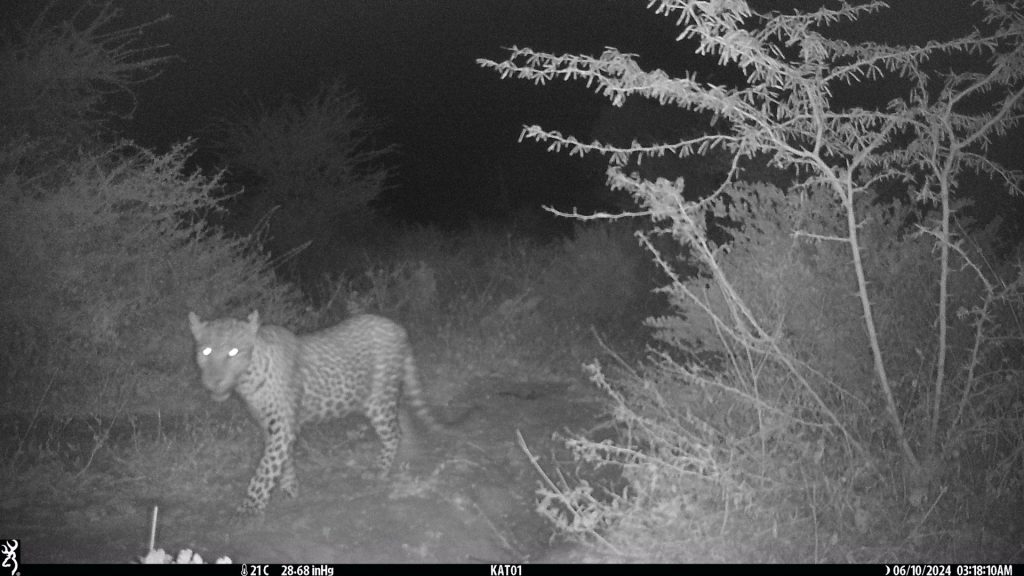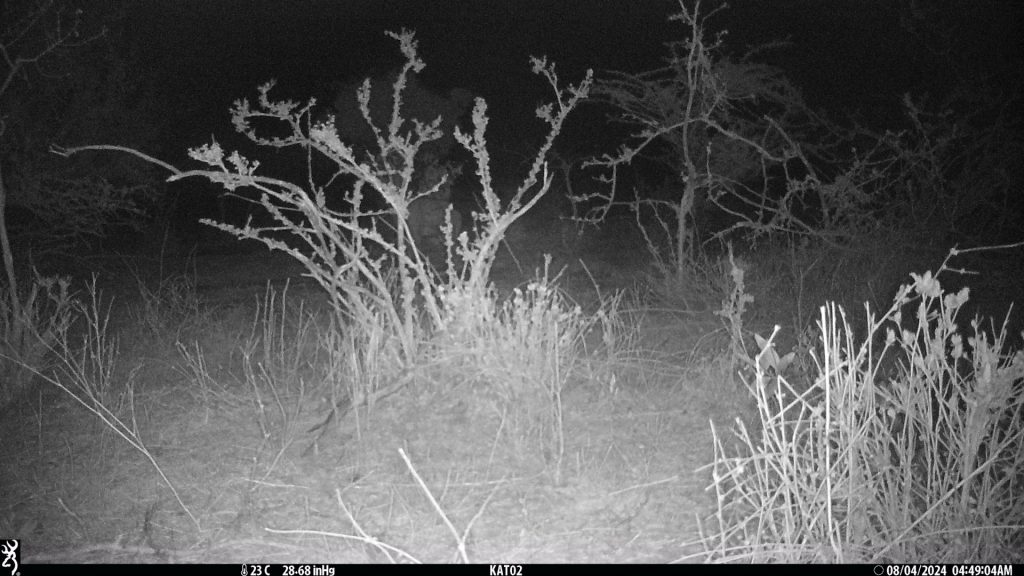How cameras can save carnivores
Camera traps are becoming a key tool to support our conservation work in Kenya, as we help local people live in harmony with wild animals – even lions, leopards and hyenas!

Camera traps are a great, non-invasive way to monitor wild animals and discover more about their behaviour – especially when they’re active at night. This doesn’t make it easy though – take a look at the pictures below and see who you can spot!
Connected to an infrared sensor, camera traps are triggered by motion, and take a photo or video when something moves in front of them. This makes them a very useful tool for conservation. They can be set-up to capture images of any animal who passes by, over a few days or several months!
Camera traps can help identify which species are present in an area, and look at interactions between species. They can also provide insight to wildlife behaviour, which can be challenging to observe first-hand. Camera traps are particularly useful at night, when it can be difficult to spot wild animals and determine which species – often only their eyes are visible.
In Kenya, our Pride of Meru team has put camera traps next to bomas (nighttime enclosures) to find out how carnivores including lions, leopards and hyenas, can behave when close to people and their livestock. Six households are participating, with each of their bomas equipped with three cameras. This allows us to capture images from different angles and understand whether carnivores are interested in entering a boma, or simply passing-by.
“To find out more about carnivores, we installed camera traps on predator-proof bomas – which we have reinforced, and bomas given flashing predator deterrent lights,” explains our Pride of Meru Field Assistant Moses Gitonga. “Since then, the community’s perception has shifted significantly.
“Initially people were skeptical, confusing the technology with CCTV and doubting its effectiveness. However, as we explained how the cameras worked and showed the photos they captured, attitudes changed. People now appreciate the cameras’ role identifying which predators come close to the bomas, as well as being more informed about the challenges in protecting their livestock.”
The camera traps help us understand how carnivores behave near the bomas, and inform our work to find humane solutions to ‘human-carnivore conflict’. It also helps us identify which species come close to bomas at night and could pose a risk to livestock.
This is important, as species can be wrongly identified during livestock attacks, due to the intensity of the situation and difficulty seeing at night. Lions are often targeted in retaliation, however, may not always be involved.
Camera traps are also a great way to engage people with monitoring wildlife. Wild animals can be incredibly well camouflaged, and photos need careful scrutiny to see who’s there. For example, can you spot the hyena in the photo below?

